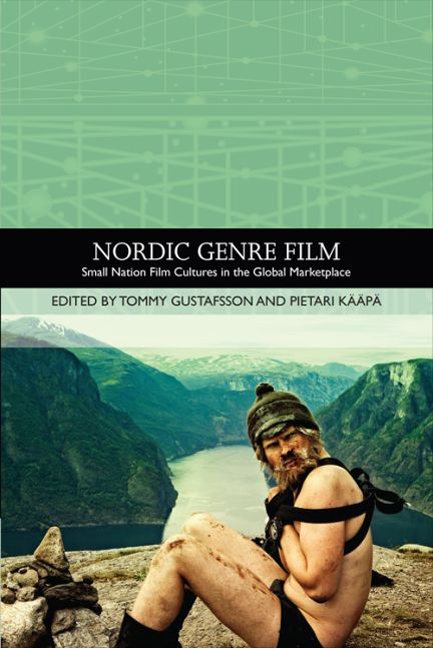Book contents
- Frontmatter
- Contents
- List of Illustrations
- List of Contributors
- Traditions in World Cinema
- Introduction: Nordic Genre Film and Institutional History
- PART I HERITAGE CINEMA AND NATIONAL NARRATIVES
- PART II CRIME AND DETECTIVE NARRATIVES
- PART III NORDIC OPTIMISM: ROAD MOVIES, COMEDIES AND MUSICALS
- PART IV NORDIC HORRORS
- 13 Slasher in the Snow: The Rise of the Low-Budget Nordic Horror Film
- 14 Nordic Vampires: Stories of Social Exclusion in Nordic Welfare States
- PART V GENRE BENDERS
- Index
13 - Slasher in the Snow: The Rise of the Low-Budget Nordic Horror Film
from PART IV - NORDIC HORRORS
Published online by Cambridge University Press: 25 October 2017
- Frontmatter
- Contents
- List of Illustrations
- List of Contributors
- Traditions in World Cinema
- Introduction: Nordic Genre Film and Institutional History
- PART I HERITAGE CINEMA AND NATIONAL NARRATIVES
- PART II CRIME AND DETECTIVE NARRATIVES
- PART III NORDIC OPTIMISM: ROAD MOVIES, COMEDIES AND MUSICALS
- PART IV NORDIC HORRORS
- 13 Slasher in the Snow: The Rise of the Low-Budget Nordic Horror Film
- 14 Nordic Vampires: Stories of Social Exclusion in Nordic Welfare States
- PART V GENRE BENDERS
- Index
Summary
Arguably, the horror film is the most frowned upon film genre, perhaps only surpassed by the porn film. Historically, the horror film has often been seen by Nordic film critics and film censors since the 1930s as something foreign or as yet another sign of unlawful Americanisation. Although the production of genre films has been prominent among all Nordic film industries ever since the silent film period, these genre films have mostly consisted of comedies and, especially in recent years, crime and detective films. The Nordic horror film in all its shapes and forms has been an anomaly in the Nordic countries, and this argument does not include the somewhat anachronistic genre labelling of films such as The Phantom Chariot (Körkarlen, Victor Sjostrom, 1921) and The Vampire (Vampyr, Carl Theodore Dreyer, 1932).
This historic rejection can be explained by three interrelated factors: (1) a weak tradition of horror in Nordic film and literature; (2) an officially sanctioned aversion from depictions of horror which was seen as ‘brutalizing, arousing, or creating confusion to law and order’ (Skoglund 1971: 18) via the establishment of national film censorship boards in all the Nordic countries; (3) the difficulties of financing horror films as a consequence of this publicly sanctioned aversion. When state-funded film institutes were established in the Nordic countries between 1955 and 1972, they did not fund ‘low-brow’ horror films. This in turn created two outcomes. First, only a few feature horror films have been produced in all of the Nordic countries and, consequently, compiling a precise list to cover these is not the easiest task. Nevertheless, all in all there have been approximately ninety feature films produced that could be labelled as horror films. These range from Iceland's two horror films, The Reykjavik Whale Watching Massacre (Julius Kemp, 2009) and Frost (Reynir Lyngdal, 2012) to the fifty or so horror films produced in Sweden. Second, and the main reason for the difficulty in compiling a list, is the fact that these feature horror films have been produced, almost without exception, with extremely low budgets and outside the regular film industry.
- Type
- Chapter
- Information
- Nordic Genre FilmSmall Nation Film Cultures in the Global Marketplace, pp. 189 - 202Publisher: Edinburgh University PressPrint publication year: 2015

